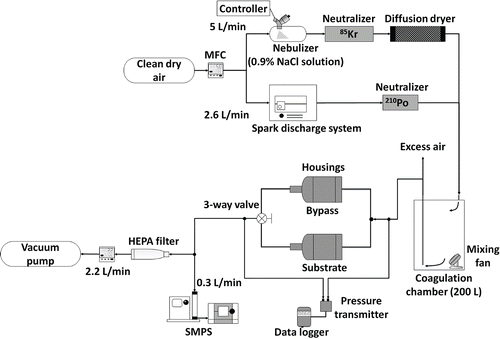Figures & data
Table 1. Summary of elemental analysis of blank substrates. ND indicates not detected.
Figure 2. SEM images of clean (0 h loading) and particle-laden substrates for (a) clean polyurethane foam and after 20 h loading and (b) clean nylon mesh and after 1 h loading. Agglomerated metal fume particles span pores of nylon mesh but not those of foam.
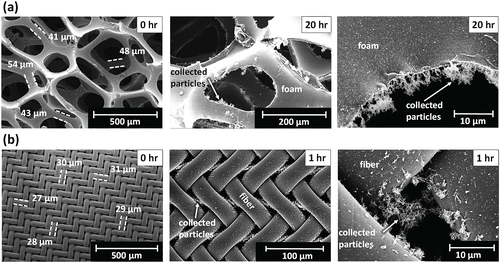
Figure 3. Adjusted collection efficiency of foam by particle mobility diameter for NaCl and metal fume aerosols. Error bars represent one standard deviation of the five substrate samples. NPM criterion has been adjusted for shape factor (). Clark et al. Citation(2009) foam model has been adjusted for particle density and shape factor (χ) of NaCl.
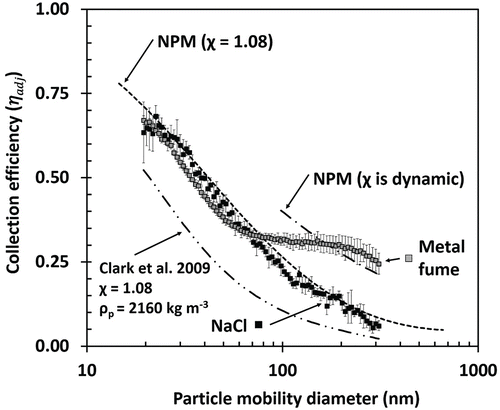
Figure 4. Adjusted collection efficiency of (a) foam and (b) nylon mesh by particle mobility diameter when clean (0 h) and after loading with metal fume up to 20 h (19 mg) foam, and 5 h (1 mg) nylon meshes.
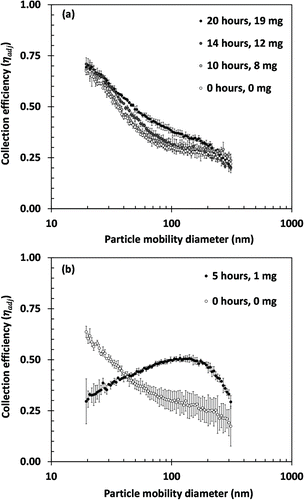
Figure 5. Pressure drop after loading of metal fume for foam (over 20 h) and eight nylon meshes (over 5 h).
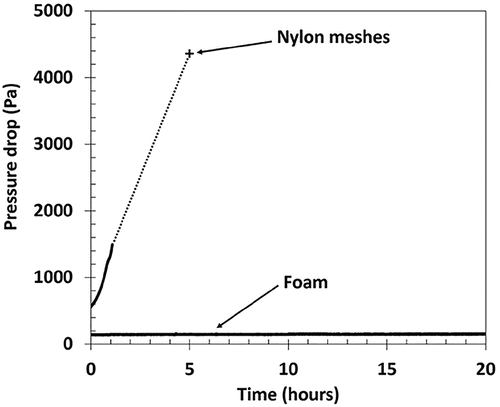
Table 2. Mass of Fe collected on foam and nylon mesh substrates by section. The foam was loaded for 20 h and then cut into four parts. Nylon meshes were loaded for 1 h.

